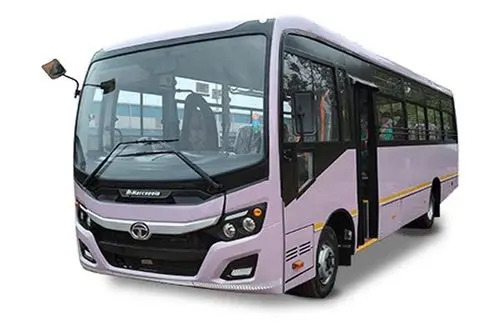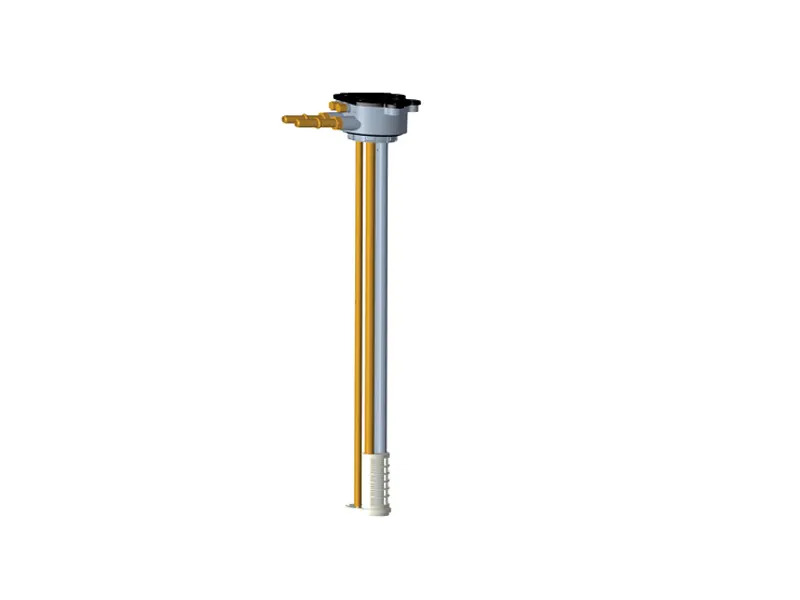What Makes a Tata Bus Tick? A Deep Dive into Engineering & Design

Strong 8k brings an ultra-HD IPTV experience to your living room and your pocket.
When it comes to public transportation in India, the Tata Bus is nothing short of iconic. Known for its reliability, durability, and innovation, it has become the backbone of both urban and rural mobility. Whether ferrying school children or powering long-distance interstate routes, Tata’s range of buses has redefined the commuting experience. At TrucksBuses, we recognize the unmatched contribution of Tata’s engineering legacy to India's transportation sector. But have you ever wondered what actually goes into the making of a Tata Bus? Let's open the doors and step into the world of design and engineering brilliance.
1. Built for Indian Roads: Chassis That Can Take a Beating
At the heart of every Tata Bus lies its chassis — the skeleton that supports the entire structure. Designed to endure the often harsh conditions of Indian roads, Tata uses a combination of high-tensile steel and precision-welded frames. The chassis variants are tailored to different use-cases: school buses, intercity travel, staff transportation, and even heavy-duty applications.
The reinforced chassis ensures minimal vibration and maximum load-bearing capacity, providing both comfort and structural longevity. Engineers also focus heavily on weight distribution to ensure better fuel efficiency without compromising strength.
2. Powertrains That Perform — Diesel, CNG, and Now Electric
One of the key reasons behind Tata’s success in the bus segment is its ability to evolve with the times. Initially dominated by diesel engines, the Tata Bus portfolio now includes CNG and electric variants as well. Tata’s diesel engines are well-known for their torque-rich performance and efficiency, while the CNG models cater to eco-sensitive urban environments.
But the real game-changer is the entry of electric buses. Tata’s EV lineup features advanced lithium-ion battery technology, regenerative braking systems, and smart energy management features. These buses are quieter, cleaner, and are gaining significant traction among city municipalities looking to reduce their carbon footprint.
3. Suspension Systems for Smooth Rides
Comfort isn't just about cushioned seats; it begins with the suspension. Tata Buses are equipped with a combination of parabolic leaf springs and air suspension systems, depending on the model. The front and rear suspension systems are designed to absorb shocks and reduce jolts, even on poorly maintained roads.
The air suspension, especially in long-distance buses, greatly enhances passenger comfort by maintaining a level ride height and reducing body roll during turns. This is particularly crucial for intercity and tourist applications.
4. Driver-Centric Cabin Design
Tata has placed a strong focus on improving the driver's environment. The ergonomic layout of the dashboard, visibility angles, low fatigue pedals, and power steering combine to make the driver's job less stressful and more efficient.
The new-age Tata Bus cabins are also equipped with digital instrument clusters, GPS navigation readiness, and even camera systems to reduce blind spots. The company realizes that a comfortable driver leads to a safer journey, and this philosophy is evident in the design.
5. Passenger Comfort: More Than Just Seating
Passenger-centric features have come a long way. Tata offers a variety of seating configurations with options for reclining seats, individual AC vents, USB charging ports, and infotainment screens in premium variants. The buses are also designed to maximize aisle space and headroom, creating a more breathable cabin environment.
Noise insulation is another often-overlooked area where Tata excels. Through clever material use and structural engineering, cabin noise is kept to a minimum, allowing for a more pleasant ride.
6. Safety Above All
Safety is a cornerstone in the design of every Tata Bus. Key safety features include:
- Anti-lock Braking System (ABS): Reduces skidding and improves vehicle control.
- Electronic Stability Control (ESC): Helps maintain directional control during sudden maneuvers.
- Fire Detection and Suppression Systems (FDSS): Particularly in school and city buses.
- Seat belts and emergency exits: Mandatory in all models, with layouts designed to meet Indian safety regulations.
Moreover, the body structure undergoes rigorous crash testing to meet both Indian and international safety norms.
7. Smart Connectivity and Telematics
Modern Tata Buses come embedded with telematics systems that allow fleet operators to monitor everything from fuel consumption and route efficiency to engine diagnostics and driver behavior. This helps in predictive maintenance and reduces downtime.
Tata’s integration with fleet management software ensures real-time alerts, geo-fencing, and trip history—features that are particularly valuable for large transport companies and government fleets.
8. Aesthetic & Functional Design
Gone are the days when buses were just metal boxes on wheels. Today’s Tata Buses sport sleek, aerodynamic designs that not only look good but also contribute to fuel efficiency. The body contours, roof designs, and panel fitting are crafted with wind flow and drag reduction in mind.
Lighting is another area of emphasis. LED headlamps, DRLs, and high-mounted stop lamps are standard in many new models, adding both aesthetic appeal and functionality.
9. Modular Architecture for Versatility
Tata has adopted a modular architecture that allows a single platform to support multiple body configurations. This makes it easier for custom applications—be it a city bus, school van, sleeper coach, or luxury tourist vehicle.
The modular approach also makes maintenance simpler and more cost-effective, as many components are interchangeable across models.
10. Environmental Responsibility: The Future is Green
Tata’s commitment to sustainability is reflected in its increasing investment in electric and hydrogen-fuel cell buses. The EV models already operating in cities like Mumbai, Pune, and Ahmedabad are reducing air pollution and setting new benchmarks in eco-friendly transport.
Tata Motors is also exploring recyclable materials and energy-efficient manufacturing practices in its bus division, aligning with global green mobility goals.
Conclusion
The Tata Bus is much more than a mode of transport—it’s a marvel of engineering tailored for India’s unique challenges. From rugged chassis and advanced safety systems to comfort-first design and sustainable powertrains, every component is thoughtfully engineered. Tata has managed to blend form with function, heritage with innovation, and performance with responsibility.
As India moves towards a smarter, greener transport future, Tata Buses are poised to remain at the forefront. And for those looking to explore or invest in these vehicles, platforms like TrucksBuses offer the perfect gateway to insights, comparisons, and the best deals across Tata’s extensive bus range.
Note: IndiBlogHub features both user-submitted and editorial content. We do not verify third-party contributions. Read our Disclaimer and Privacy Policyfor details.







